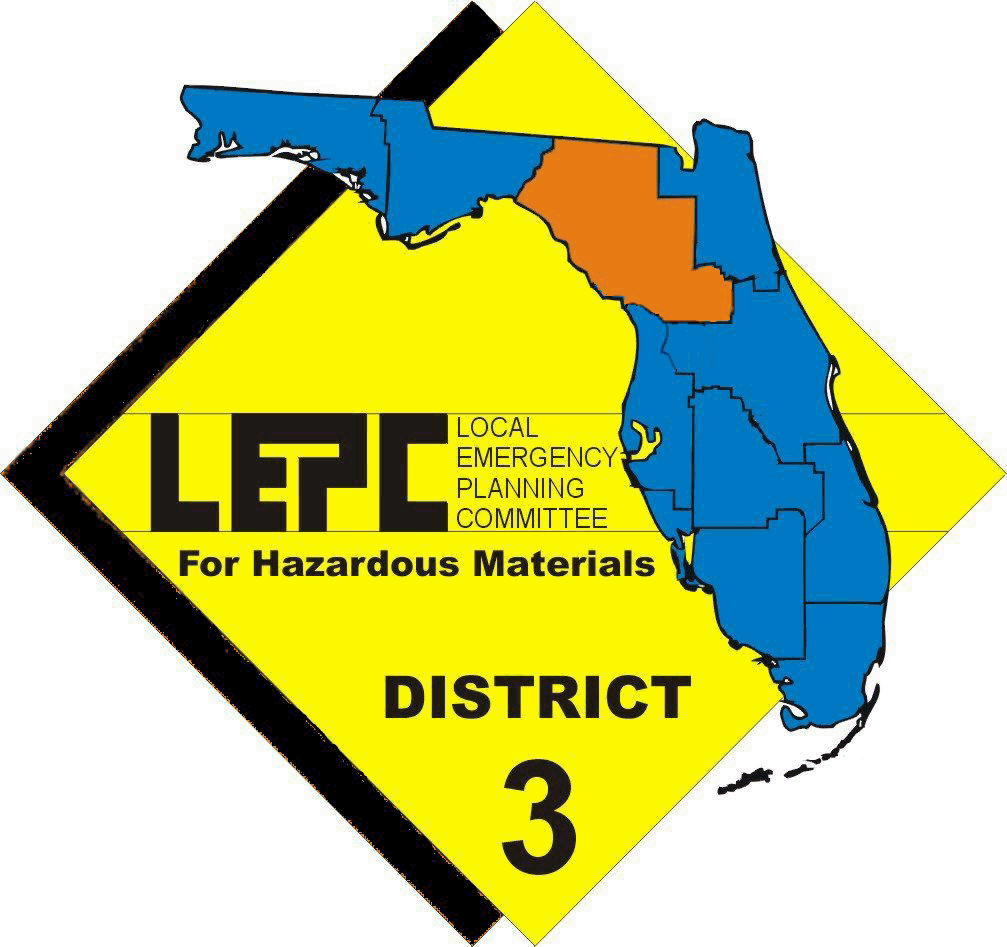
NORTH
CENTRAL FLORIDA
LOCAL
EMERGENCY PLANNING COMMITTEE
2009 NW 67th Place,
Gainesville FL 32653-1603 -- (352) 955-2200 x108 -- fax 955-2209
 |
NORTH
CENTRAL FLORIDA
|
Is Your Address Vulnerable to a Chemical Spill? allows you to quickly find out if an address of interest to you - your home, place of work, or child's school - may be in the vulnerable zone of a facility that submitted a Risk Management Plan (RMP). This is new from the U.S. EPA. Additional information is available for review at the LEPC office (click for map)
Section 112(r) of the Clean Air Act requires facilities to develop a risk management program to prevent and mitigate the effects of chemical accidents, and to document the program in a Risk Management Plan (RMP). These RMPs will be available to state and local agencies and to the public. Therefore, LEPCs will have access to more detailed information about chemical hazards in their communities. LEPCs can use this information to improve emergency response plans, inform the public about chemical accident hazards and risks, and work with industry and the public to reduce risks and improve chemical safety.
The Role of the LEPC in the implementation of the Clean Air Act Section 112(r) has been discussed by the RMP Implementation Workgroup of the EPA and reported on by the LEPC Issues Subgroup. Based upon the recommendations and review of the LEPC Issues Subgroup, the EPA published RMPs are on the Way! How LEPCs and Other Local Agencies can Include Information from Risk Management Plans in Their Ongoing Work. (June 1999, updated December 1999)
The LEPC initiated a Safety Street Project to help inform the community of the risks associated with facilities regulated under Section 112(r) of the Clean Air Act (CAA). Sites with threshold quantities (TQs) of certain toxic and flammable chemicals to submit electronically an RMP to a centralized location on or before June 21, 1999. The LEPC formed a Safety Street Workgroup to assist local businesses and government organizations to develop RMPs and present them to the public. The US EPA had a RMP Implementation Workgroup which LEPC staff Dwayne Mundy was a member and Chair of the LEPC Issues Subgroup for two years.
The LEPC sponsored a Safety Street presentation in Gainesville to explain the risk management program to the public. Hazardous materials accident prevention is the goal of these presentations. The LEPC also participated in two open houses at facilities in surrounding counties.
Last year’s public education efforts include Hazardous Materials Spill Prevention Week and having a display at the North Central Florida Hurricane Hunter Exhibition 2000, held March 24-25, 2000. In 1999, over 7,500 people attended this year. Another Hurricane Expo was held April 20-21, 2001 at the Gainesville Airport. More information on Hazardous Materials Spill Prevention Week is available from the U.S. EPA. Counties, municipalities and school boards across north central Florida support increasing the safety of our communities from chemical releases by participating in the 2001 Spill Week.
Click on the Buttons below to view Risk Management Plans (RMP) reported under Section 112(r) of the Clean Air Act. The Counties with Orange buttons currently have any facilities registered with the U.S. EPA. Federal law restricts the U.S. EPA from including the worst-case scenarios on the Internet. Other queries can also be made from the EPA's RMP*Info website.
More information at Envirofacts
The primary mechanism of coordination for Section 112(r) facilities with toxic chemicals are the EPCRA Section 302 Hazards Analyses. The Hazards Analyses are currently being updated by the counties. The Section 302 Hazards Analyses alone offer a certain amount of the desired coordination. However, the LEPC believes that the enhanced coordination method will help increase community safety by asking about coordination with local responders that will be first on the scene. Many responders have reported that the LEPC asking the date of the last fire preplan has resulted in many facilities updating their pre-plans with their local fire department.
|
What's New | Accident Prevention | Right-to-Know |
Calendar
Agenda & Minutes | Regional Team | Emergency Plan | Training Forward | Home | Back | About the LEPC | Links | email |